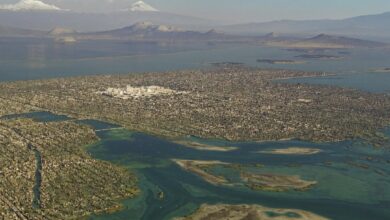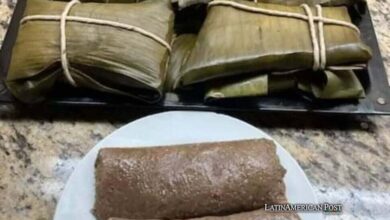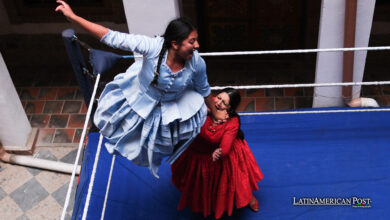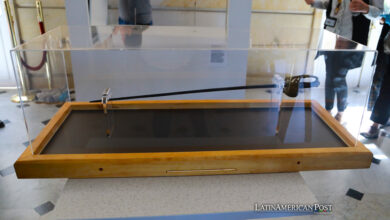Mexico Opens New Museum at Chichén Itzá, Showcasing Maya Civilization

Mexico has opened a new museum at the Chichén Itzá archaeological site, showcasing 1,000 pre-Columbian objects and offering a new perspective on the Maya civilization.
A Monumental Occasion
In a momentous event, the Mexican government inaugurates the Grand Museum of Chichén Itzá on Wednesday, marking the first museum dedicated to the iconic archaeological site. Spanning 2,800 square meters, the museum promises to showcase 1,000 artifacts, including treasures unearthed during the construction of the Maya Train, alongside offering fresh insights into this ancient indigenous civilization.
“This will be the first formal museum of Chichén Itzá, symbolizing the city’s significance within the Mesoamerican context,” explained José Osorio León, the director of the archaeological site, in an interview with EFE.
Constructed by the National Institute of Anthropology and History (INAH), the museum stands a few kilometers from the millennia-old city in southeastern Mexico, a UNESCO World Heritage Site and one of the New Seven Wonders of the World.
The museum will feature approximately 1,000 pre-Columbian objects across seven galleries and interactive areas, Osorio León outlined.
“We will present monumental pieces such as the Chaac Mool (a mysterious Mesoamerican culture), and The Table of the Captives found in the initial series of Chichén Viejo, along with other artifacts from the Maya culture displayed in museums around the world,” he revealed.
Most Visited Archaeological Site
Diego Prieto, the director of INAH, highlighted that following the museum’s opening, Chichén Itzá anticipates a record-breaking visitation of over 3 million tourists this year, averaging 8,000 daily, solidifying its position as the most visited archaeological site in the Americas.
“Today is a great day for Mexican archaeology; it’s also a significant day for the Maya culture of Mexico and Mesoamerica,” expressed Prieto during President Andrés Manuel López Obrador’s morning conference.
Osorio León, an archaeologist researching the site since 1995, assured visitors would be captivated by the new museum, part of the larger Tren Maya project envisioned by López Obrador for southeastern Mexico.
“We will also display various sculptural elements and vessels arranged in the galleries based on their volume, size, importance, and representativeness of Chichén Itzá, the site that reached its zenith in 900 to 1200 A.D. (Terminal Late Classic),” he elaborated.
The expert emphasized that the new museum will enhance the visitor experience at the Chichén Itzá archaeological site, where Mayan ceremonies still occur at the Sacred Cenote.
“Over 800 centuries have passed since the Maya abandoned the city, yet people still come to perform ceremonies during the archaeological events recorded at Chichén Itzá, mainly before the Kukulcán Castle and the Sacred Cenote,” he specified.
Decades of Research Unveiling Unprecedented Pieces
Osorio León considered it a pride to have a museum “with pieces discovered during investigations and excavations conducted over the last 30 years at the site, which comprises 13 residential complexes.”
Among the artifacts making their public debut in Yucatán is the Chaac Mool, a distinctive sculpture of Chichén Itzá found in the Plaza of the Thousand Columns, belonging to the Palace of the Sculpted Columns.
The Chaac Mool consists of two pieces: the flexed body at the front and the head fitted into the neck through a cavity, adorned with polychrome elements, necklaces, earflaps, and bracelets painted in turquoise.
“We continue to investigate the function of the Chaac Mool, as it may serve as an element of the altars due to its direct communication between the earthly realm and the gods,” he posited.
Also read: Mexico’s 180 New Textbooks in 20 Indigenous Languages Boosts Cultural Pride
Osorio León noted that The Table of the Captives, found years ago in Chichén Viejo, one of the 13 residential complexes a few kilometers from the Kukulcán Castle, will also be displayed.
The stone table, which was reused as a sidewalk within The House of the Snails in Chichén Viejo, measures 1.66 meters in length by 1.27 meters in width and dates back to 900 to 100 A.D.





